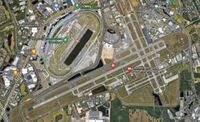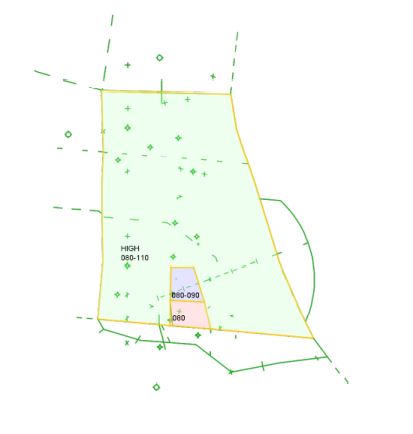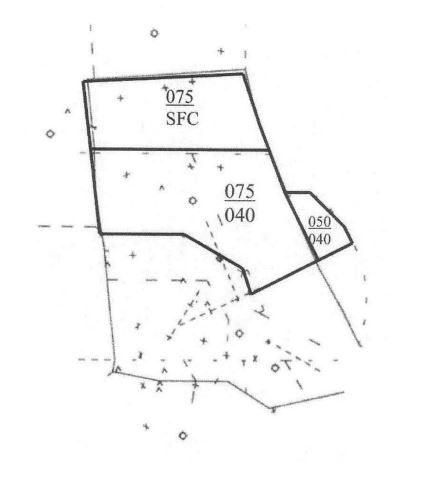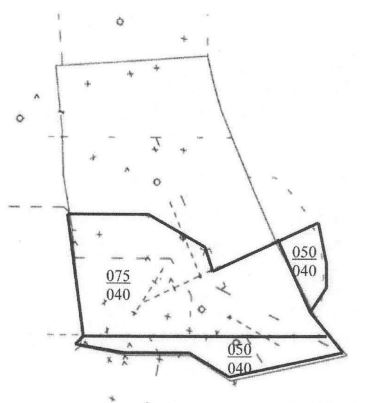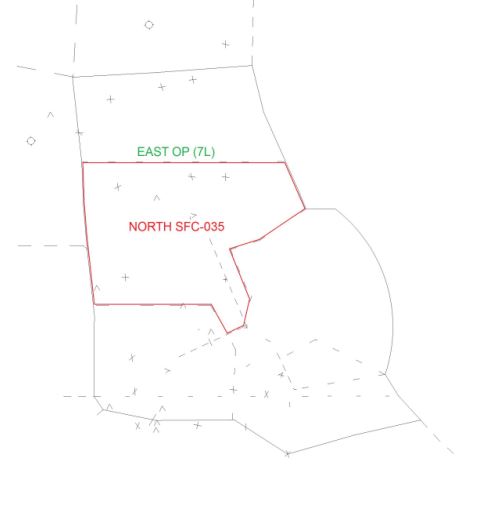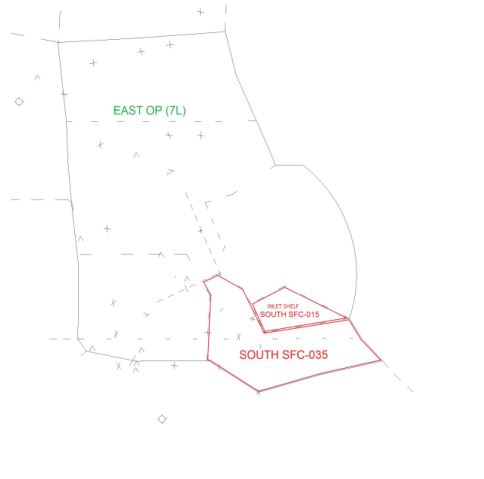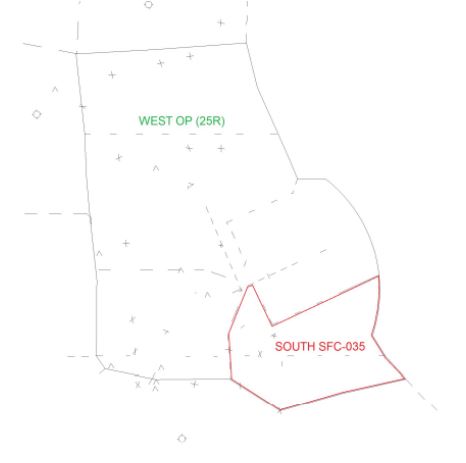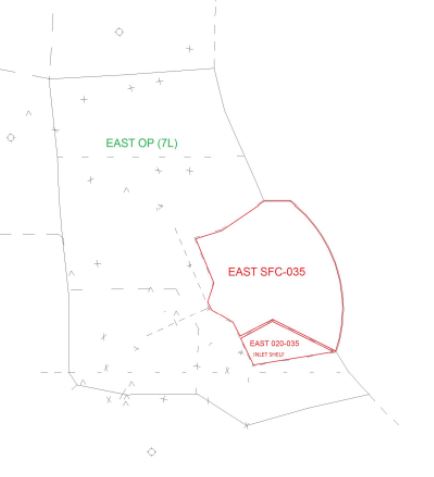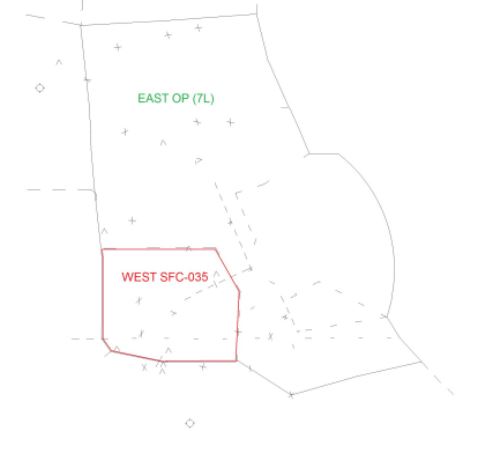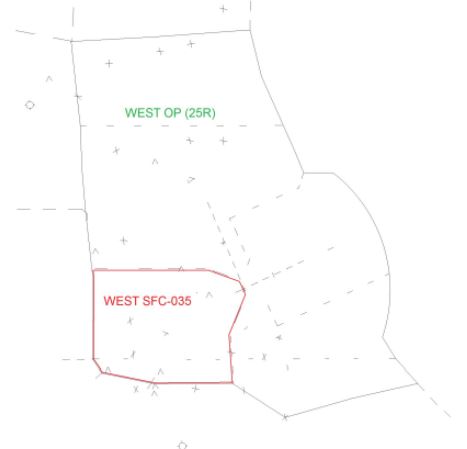Daytona Beach Intl ATCT/TRACON
Table of Updates
| Date | Revision | Items Revised |
|---|---|---|
| 16 February 2023 | A | Updated Satellite Release for Departures to contain IFR release |
| 10 October 2023 | B | Update of Format and Limit Radar Tower Information |
| 31 January 2024 | C | Update of Primary Tracon Facility and appropriate splits |
Area Information
| ICAO Code | Airport Name | Airspace | IFR Beacon Codes | VFR Beacon Codes |
|---|---|---|---|---|
| KDAB | Daytona Beach International Airport | C | 3001-3077 | 3001-3077 |
| Purpose This document prescribes the procedures to be utilized for providing air traffic control services at the Daytona Beach Air Traffic Control Tower (DAB ATCT) and TRACON. The procedures described herein are supplemental to the Jacksonville ARTCC Facility Operating Guidelines and FAA Order JO 7110.65, as well as any published FAA guidelines or procedures. Distribution |
Operational Positions
| Position | Radio Name | Callsign | Relief Callsign | Symbol | Frequency |
|---|---|---|---|---|---|
| Clearance Delivery | Daytona Beach Clearance Delivery | DAB_DEL | DAB_1_DEL | 5DD | 119.300 |
| Ground | Daytona Beach Ground North | DAB_N_GND | DAB_N1_GND | 5NG | 121.900 |
| Ground | Daytona Beach Ground South | DAB_S_GND | DAB_S1_GND | 5SG | 124.250 |
| Tower | Daytona Beach Tower North | DAB_N_TWR | DAB_N1_TWR | 5NT | 120.700 |
| Tower | Daytona Beach Tower South | DAB_S_TWR | DAB_S1_TWR | 5ST | 118.100 |
| Position | Sector Name | Callsign | Relief Callsign | Symbol | Frequency |
|---|---|---|---|---|---|
| H | High Radar | DAB_H_APP | DAB_1H_APP | 5H | 125.725 |
| M | Mateo Radar | DAB_M_APP | DAB_1M_APP | 5M | 118.850 |
| L | Lamma Radar | DAB_L_APP | DAB_1L_APP | 5L | 127.075 |
| N | North Radar | DAB_N_APP | DAB_1N_APP | 5N | 125.800 |
| S | South Radar | DAB_S_APP | DAB_1S_APP | 5S | 125.350 |
| E | East Radar | DAB_E_APP | DAB_1E_APP | 5E | 123.900 |
| W | West Radar | DAB_W_APP | DAB_1W_APP | 5W | 126.550 |
Sector in Red is the primary sector.
Clearance Delivery
Clearance Delivery Responsibilities
The Clearance Delivery Controller Must:
- Formulate and issue all IFR clearances to aircraft departing this field.
- Review proposed flight plan information for accuracy and amend routings and altitudes, as necessary, in accordance with this SOP.
- Enter amendments to flight plans into the controller client as required and advise the pilot what those amendments are.
- Issue clearances or route changes to aircraft, as required complying with traffic management initiatives and/or weather avoidance.
- Forward and await a response on all non-standard routing requests to the affected facilities.
- During Events: Do not change routes or proposal times for aircraft participating in Traffic Management programs without prior coordination with the controller in charge.
Pre-Departure Clearances
IFR Departures
Planned/Amended Routing
All Turbojet/Turboprop aircraft departing to the north shall be assigned the ROYES # SID then as filed unless a route amend is necessary. All other aircraft shall be "Cleared as filed" unless a route amendment is necessary. All routes must comply with LOA-approved standards. Aircraft unable to accept the preferred route require coordination between all affected facilities.
Assigned Altitudes
Piston/Helicopter: Instruct pilots that are not conducting practice approaches to maintain 3,000 feet and to expect filed cruise altitude (If higher) ten minutes after departure. Instruct pilots who are conducting practice approaches to maintain 2,000 feet. All filed cruise altitudes must be checked for validity for the direction of flight.
Turboprop/Jets: Instruct pilots that are not conducting practice approaches to maintain 4,000 feet and to expect filed cruise altitude (If higher) ten minutes after departure. Instruct pilots who are conducting practice approaches to maintain 3,000 feet. All filed cruise altitudes must be checked for validity for the direction of flight.
Departure Frequency
The Primary Departure Frequency is DAB_H_APP on 125.725. Updates to the Departure Frequency will be given by the TRACON controller.
Squawk Assignment
All IFR Squawk codes will be auto-assigned by the controller client.
It should assign a code between 3001-3077. Controllers shall not change the auto-assigned code if a code between 3001-3007 is not assigned.
VFR Departures
Clearance
VFR Aircraft do not need explicit clearance to enter or exit the airspace.
All VFR remaining in the pattern will require coordination with the tower and will be directed to contact when ready for taxi.
Assigned Altitudes
Not Remaining in the Pattern
Jet: VFR aircraft shall be instructed to maintain VFR at or below 4,000.
Turboprops: VFR aircraft shall be instructed to maintain VFR at or below 4,000.
Props: VFR aircraft shall be instructed to maintain VFR at or below 3,500.
Departure Frequency
Aircraft not remaining in the pattern shall be given the Departure Frequency is DAB_H_APP on 125.725.
Aircraft remaining in the pattern shall not be given a departure frequency.
Squawk Assignment
VFR Squawk codes shall be assigned by the controller client using the assign squawk feature in their controller client for all traffic not remaining in the pattern.
Ground
General Information
Ground Control Responsibilities
The Ground Controller is responsible for the movement of vehicles and aircraft on the airport movement areas except for the active runway(s)
GC1 and GC2 has control of all movement areas excluding the designated active runway(s).
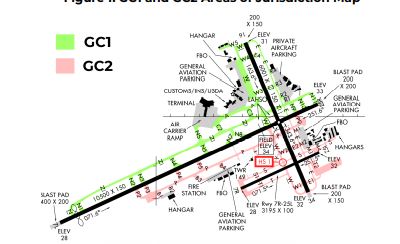
ATIS
Ground control shall confirm all pilots have the current ATIS code PRIOR to commencing taxi to the active runway. This can be achieved by requesting the pilot "state the current ATIS code". The ATIS is the responsibility of the tower controller.
Active Runway Operations
Except for runway crossings, Ground Control must transfer communication to Local Control if a vehicle/aircraft is to operate on a runway. Coordination for all runway crossings must be accomplished by requesting permission from local control by stating "(Number of Aircraft) to cross Runway (#) at Taxiway (Letter). Once approved and crossing has been granted and the crossing has been observed, ground control must state to local control "Runway (#) crossing complete"
Ground Operations
The preferred ground traffic flow is southbound on Taxiway E and northbound on Taxiway W. Under normal circumstances and unless coordinated otherwise, all taxiways are one-way taxiways
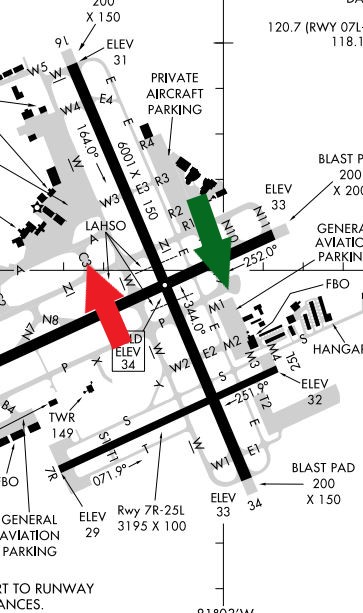
Departures
During high volume scenarios and when Runway 7L/25R is the primary runway, taxi all northbound aircraft to Runway 7L/25R. All southbound aircraft and VFR pattern aircraft should be taxied to Runway 7R/25L, unless an operational advantage will occur or performance characteristics dictate otherwise.
Intersection Departures
Ground Control must advise local control of all intersection departures verbally.
Opposite Direction Departures
Ground Control must coordinate and obtain approval from Local Control, prior to taxiing an aircraft to a runway for an opposite-direction departure.
Pushback and Startup
Push back into a controlled area: Aircraft shall be instructed: "Push and Start Approved, tail facing (direction)." The direction should keep the aircraft pointed in the direction the aircraft will taxi.
Push back will not enter a controlled area: Aircraft shall be instructed: "Push and start at pilot's discretion."
Runway Assignments
The runway assignment should be the runway closest to the position of the aircraft based on the Active Runway Assignments as selected by the Local Controller.
Taxi Operations
As the taxiways at Jacksonville are simple, there are no defined routes for taxi.
NOTE: Do not direct an aircraft leaving the runway to hold short of the parallel taxiway without prior approval from LC.
Split Ground Procedures
The transfer of control point for northbound traffic is the hold short line south of Runway 7L/25R.
The transfer of control point for southbound traffic is the north edge of Taxiway Papa at Taxiway Echo and Runway 16/34. GC1 must coordinate with GC2 for all other southbound crossings.
If flight strips are in use, transfer strip prior to the aircraft reaching the transfer of control point.
Transfer of Communication
Departing aircraft shall be instructed to contact the local control frequency upon or slightly before holding short the runway for departure. Local control has the option to have the pilot "monitor" the frequency. If a pilot is going to monitor, ground control must send a private message via the controller client of the aircraft with their callsign and runway.
Tower
Active Runway Selection
The active runway shall be determined based on wind and known factors that may affect the safety of takeoff/landing operations.
East Operations is designated as the calm wind runway.
7110.65Z Runway Selection
Area of responsibility
LC is divided into LC1 and LC2 as required for volume of GA traffic.
LC1
LC1 area of responsibility includes the airspace depicted. Airspace is defined as surface to 1,500 feet. LC1 shall be responsible for movements on Runway 7L/25R and Runway 16/34.Runway 7L is left pattern. Runway 25R is right pattern.
LC2
LC2 area of responsibility includes the airspace depicted. Airspace is defined as surface to 1,500 feet. LC2 shall be responsible for movements on Runway 7R/25L. Runway 25L is left pattern. Runway 7R is right pattern.
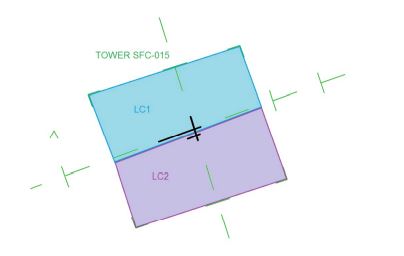
Arrival Procedures
LC shall be responsible for the separation of all arrival aircraft that have been handed off by TRACON from all departing aircraft still under LC jurisdiction
Practice Instrument Approaches: Issue special instructions as verbally coordinated with the TRACON. Departure frequency as assigned by approach control.
LC shall NOT change the approach sequence without coordination. Communication transfer must be completed prior to five nautical miles from the runway.
Automatic Terminal Information Service
LC shall manage the ATIS
The ATIS shall be on 132.875.
Automatic Releases
LC is authorized automatic releases from the TRACON controller so long as the aircraft departs on the pre-coordinated active departing runway(s) on approved departure headings
In order for automatic releases to be authorized, procedures in this document shall be followed.
Departure releases must be obtained if automatic releases are suspended by TRACON.
Departure Procedures
LC will provide separation for aircraft in the LC airspace.
LC shall provide initial radar separation between successive departures.
When automatic departures are in effect, jet and turboprop departures shall be assigned a 070 heading in East operations, and a 250 heading in West operations. Prop departures shall be released on approved fan headings.
Note: LC2 must obtain a release from LC1 for all IFR departures.
Departure Transition Area
The Departure Transition area or Departure Corridor is defined as the area that LC is authorized to depart aircraft into and through E-AP and W-AP without coordination, unless specified otherwise in this order. This airspace extends from Tower airspace out to 8 miles and surface to 4000 as depicted
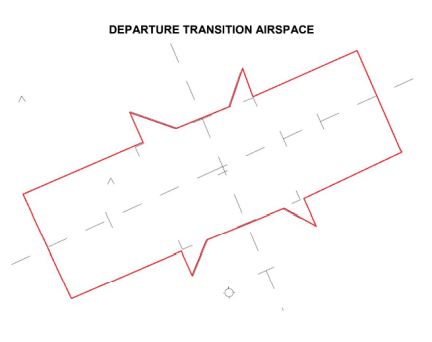
Departure Headings
Turbojet/Turboprops
When Runway 7L is primary, all departures off of 7L, 16, and 34 shall be given a heading of 070.
When Runway 25R is primary, all departures off of 25R, 16, and 34 shall be given a heading of 250.
Prop Departure Fan Headings
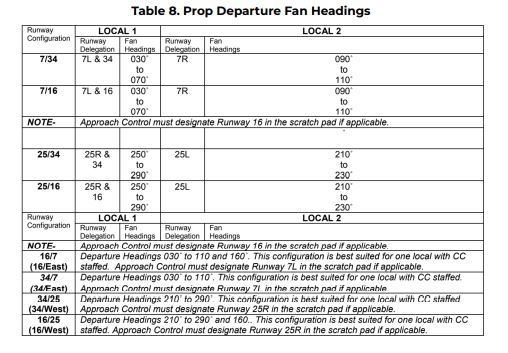
Go Around/ Unplanned Missed Approaches
LC must verbally coordinate with departure prior to frequency change.
Turbojets/Turboprops: The controller will assign runway heading and 3,000 unless otherwise stated.
Piston: The controller will assign runway heading and 2,000 unless otherwise stated.
Land and Hold Short
LAHSO operations are authorized at DAB. During LAHSO Operations, if requested by the pilot, issue the following available distances:
- Runway 16, available landing distance 2,900 feet.
- Runway 7L, available landing distance 7,500 feet.
- Runway 34, available landing distance 2,564 feet.
Line Up and Wait
Line up and wait is authorized at this field only in VMC Conditions. LUAW departures from an intersection are only authorized between sunrise and sunset.
Traffic Pattern
The VFR pattern will be at or below 1,500 feet.
Visual Tower
Daytona International ATCT is a visual/VFR tower with limited radar.T he use of vSTARS display is authorized. It shall not initiate or accept any radar handoffs and shall not initiate control/start track on any target.
TRACON Information
Operations
North (DAB_N_APP) is the primary "combined" radar position for Daytona Beach Tracon. No other sectors shall be staffed until the "combined" position is in use. Delegation may occur as below.
2-way split
North can split high/low with Mateo (DAB_M_APP).
DAB_N_APP shall be responsible for all traffic within N_APP, S_APP, E_APP, W_APP. DAB_N_APP may delegate its sectors to other new controllers.
DAB_M_APP shall be responsible for all traffic within H_APP, M_APP, and L_APP. DAB_M_APP may delegate its sectors to other new controllers.
Low Split
Note: Low split can be authorized only after the 2-way split has occurred.
The selection of the Other Tracon shall be based on the departure flow of the field.
W_APP during West Ops
E_APP during East Ops
TRACON Airspaces
Responsibility
High Radar is responsible for the safe and expeditious movement of air traffic within the delegated airspace.
North Arrival Flow
Enroute control and JAX TRACON will assign arrival aircraft to cross 15 NM north of OMN at 12,000’ or TTHOR via the TTHOR# STAR at 12,000’ and hand-off to H-AP. H-AP shall assign aircraft direct OMN and decent to 8,000’ and hand-off to M-AP
Responsibility
MATEO Radar is responsible for the safe and expeditious movement of air traffic within the delegated airspace.
North Arrival Flow
M-AP shall instruct aircraft to cross OMN at 6,000’. M-AP shall turn aircraft heading 070 or 260 (depending on airport operations) at OMN and descend aircraft to 4,000’. Afterwards, M-AP will hand-off to E-AP or W-AP.
Responsibility
LAMMA Radar is responsible for the safe and expeditious movement of air traffic within the delegated airspace.
South Arrival Flow
F11 TRACON will assign arrival aircraft to cross the TRACON border at no higher than 6,000’. F11 will hand-off to L-AP.
L-AP shall descend aircraft to 4,000’.
L-AP shall turn aircraft onto a downwind leg heading 070 or 260 (depending on airport operations). Afterwards, L-AP will hand-off to E-AP or W-AP.
Responsibility
N-AP is responsible for the arrival sequence when runway 16 is the primary runway. When runway 7 or 25 is the primary runway, North Radar must coordinate with the appropriate arrival sector for aircraft conducting LAHSO to Runway 16. N-AP is responsible for the safe and expeditious movement of air traffic within the delegated airspace.
East Ops
West Ops
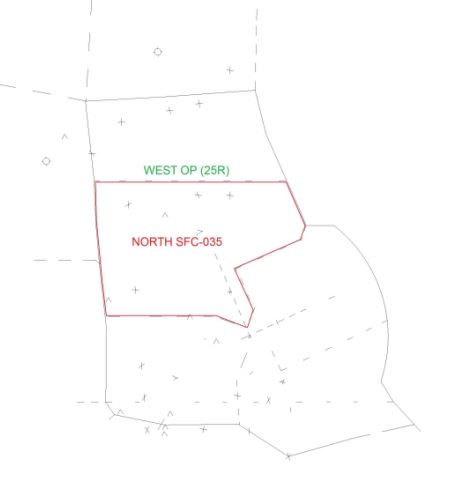
Responsibility
S-AP is responsible for the safe and expeditious movement of air traffic within the delegated airspace.
S-AP must vector aircraft arriving from the south to a mid field right downwind for Runway 7R, or mid field left downwind for Runway 25L. Arrivals for Runway 7R/25L must be restricted to a minimum of 1,500 feet unless otherwise coordinated and approved by LC2. South is responsible to advise LC2 that aircraft are unable to maintain 1500 feet.
S-AP is responsible for the arrival sequence when runway 34 is the primary runway.
S-AP owns the IFR altitude up to 1500’ in the inlet shelf.
Responsibility
E-AP is responsible for the safe and expeditious movement of air traffic within the delegated airspace. When E-AP airspace is shared between the N-AP and S-AP positions, split the E-AP airspace along the extended centerline of runway 7L/25R. The E-AP position log and frequency must normally be combined to S-AP.
The E-AP controller must assign headings to departing aircraft that will not cross the western boundary (or extended western boundary) of E-AP airspace.
The receiving controller has control of the aircraft for turns toward the receiving controller’s airspace on contact.
When departing east, large/turbojet departures may not be turned until leaving 3000 feet or the shoreline, whichever occurs first.
The E-AP controller must keep IFR traffic AOA 2,500’ over, or within 1.5nm, of the Inlet shelf.
North Arrival Flow
E-AP shall descend aircraft to 3,000’ and enter aircraft onto final.
South Arrival Flow
E-AP shall descend aircraft to 2,000’ and enter aircraft onto final.
East Ops
West Ops
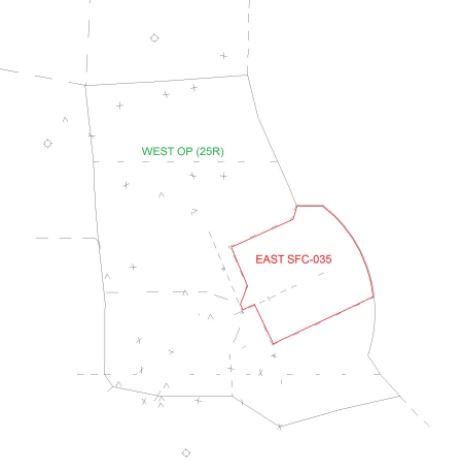
Responsibility
W-AP is responsible for the safe and expeditious movement of air traffic within the delegated airspace.
W-AP must normally consolidate to S-AP. When W-AP airspace is shared between the N-AP and S-AP positions, split the W-AP airspace along the extended centerline of Runway 7L/25R. The W-AP position log and frequency must normally be combined to S-AP.
The W-AP controller must assign headings to departing aircraft to keep the aircraft within the confines of departure airspace.
The receiving controller has control of the aircraft for turns toward the receiving controller’s airspace on contact.
North Arrival Flow
W-AP shall descend aircraft to 3,000’ and enter aircraft onto final.
South Arrival Flow
W-AP shall descend aircraft to 2,000’ and enter aircraft onto final.
Arrival Procedures-General
E-AP or W-AP (Depending Ops) is responsible for establishing the approach sequence for all arrivals. Use Table 11 for determining arrival runway assignments.
7L or 25R shall be assigned to the Turbojet/Prop Arrivals and VFR arrivals from the North
7R or 25L shall be assigned to the VFR arrivals from the South
16 or 34 shall be assigned when the primary runway
All arriving/enroute aircraft shall be vectored as not to conflict with departing aircraft. Communication transfer of arriving aircraft to LC must be accomplished no later than three but no earlier than ten nautical miles from the end of the arrival runway.
When simultaneous approaches are being conducted on converging runways, LC is responsible for ensuring runway separation. However, TRACON must provide enough spacing to minimize the possibility of a go-around.
When vectoring to final from parallel downwinds, aircraft on opposing base legs shall be assigned altitudes to ensure vertical separation unless other approved separation has been applied. This ensures separation in the event of an overshoot on final.
Coordinate with LC for any aircraft conducting approaches to other runways than the active arrival runway(s) in use. When runway assignment is other than primary, scratchpad entries should be used.
Departure Procedures-General
During standard operations, aircraft shall be assigned runway heading climbing to their initial altitude. Aircraft who filed a cruise altitude below 4,000’ will contact E-AP, W-AP, N-AP, or S-AP. Aircraft who filed a cruise altitude at or above 4,000’ will contact M-AP or L-AP depending on departure direction.
E-AP, W-AP, N-AP, and S-AP shall climb aircraft to their cruise altitude and turn departure aircraft on course as soon as practical.
M-AP and L-AP shall climb aircraft to 7,000’ and turn departure aircraft on course as soon as practical.
If aircraft’s cruise altitude is above 7,000’, M-AP or L-AP shall hand-off to H-AP. H-AP shall climb departure aircraft to 11,000’ and ensure aircraft are on course prior to hand-off to neighboring TRACONs or enroute positions.
Aircraft on the ROYES# shall be identified with ROY in the departures scratchpad.
General Procedures
Forward departure instructions to LC for aircraft executing practice missed approaches.
Ensure all departures are on course as soon as practical.
All departures should be on course before handoff to Enroute Control unless otherwise coordinated. Aircraft shall be climbed to 11,000 or less if filed.
Provide airspace for automatic departures and radar final.
Provide airspace for missed approach on all runways.
Automatic pointouts are authorized from Lamma and Mateo Arrival to East and West Radar for Turbojet/Turboprop departures.
Handoff and Radar Tracking
Daytona International ATCT is a VFR tower. No radar handoffs shall be initiated to LC.
TRACON controllers shall not drop the track on any arriving aircraft. This allows a controller to maintain radar identification during missed approach.
Orlando Area (F11) Arrivals
Arrivals into F11 satellites via the TTHOR# STAR shall be descended to 5000 feet by LOKII and transferred to the appropriate F11 Satellite Sector
Release and Rolling Calls
TRACON sectors give automatic releases to all departures from Daytona Beach ATCT when departures follow the standard departure procedures as specified in this document.
All other airports within TRACON’s boundaries shall request a departure release. Upon approval of the release, the release shall be good for five minutes.
Upon issuance of the takeoff clearance, a departure message shall be sent to the appropriate departure sector. This can be accomplished non-verbally by the LC ensuring the aircraft is squawking the appropriate squawk code and mode C is enabled when airborne.
Satellite Fields
TRACON must coordinate with the satellite fields’ ATCTs prior to approving overflights through Class D airspace. The restrictions are as follows:
KEVB: Restriction: Below 1,200'
KFIN: Restriction: AOB: 1,500'
KOMN: Restriction: Below: 1,200'
IFR Clearances
All routes must comply with approved standards between facilities. Aircraft unable to accept approved routes, the route must not be cleared until coordination has occurred between all affected facilities.
Aircraft shall be cleared as filed unless otherwise coordinated with the TRACON controller.
Aircraft departing from satellite airports shall receive an initial altitude of 2,000’.
Departure Releases
All IFR departing aircraft must receive a release from the appropriate TRACON controller.
IFR/SVFR departures should receive a departure heading to remain clear of KDAB traffic. If no departure heading is specified, the aircraft shall be released on runway heading.
VFR Departures
Unless VFR aircraft are receiving flight following, they shall be instructed to squawk VFR and sent to UNICOM/CTAF once clear of conflict after departure.
Sequencing
For piston aircraft, 2.5 NM separation may be applied between aircraft established on the final approach course to either Runway 7L or 25R within 10 NM of the landing runway when all provisions of the FAAO 7110.65 are met.
Sectorization Description
The primary “combined” radar position shall be High Radar (H-AP). No other sectors shall be staffed until the “combined” position is already in use.
Once H-AP is in use, H-AP may delegate a portion of its airspace to MATEO Radar (M-AP) and LAMMA Radar (L-AP).
Once M-AP and L-AP are in use, M-AP and L-AP may delegate a portion of their airspaces to EAST Radar (E-AP), West Radar (W-AP), North Radar (N-AP), or South Radar (S-AP). If only one low sector is staffed, N-AP shall be the combined position.
Unless otherwise coordinated, All sectors are responsible for their areas depicted
VFR Aircraft within TRACON
VFR Aircraft entering the Class Charlie airspace will be given a discrete beacon code.
If an aircraft departs from DAB and does not request a flight following, the aircraft will be handed off from LC to TRACON and released to UNICOM once clear of the Class Charlie.
Phraseology
{Callsign}, Change to Advisory Frequency Approved, squawk 1200.
7110.65Z Class C Service- Terminal
